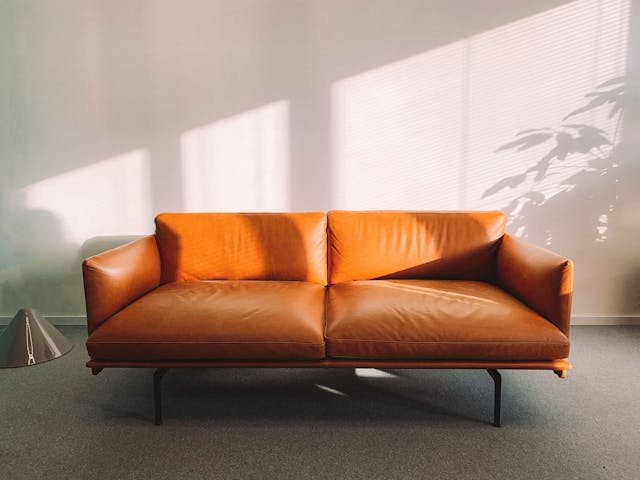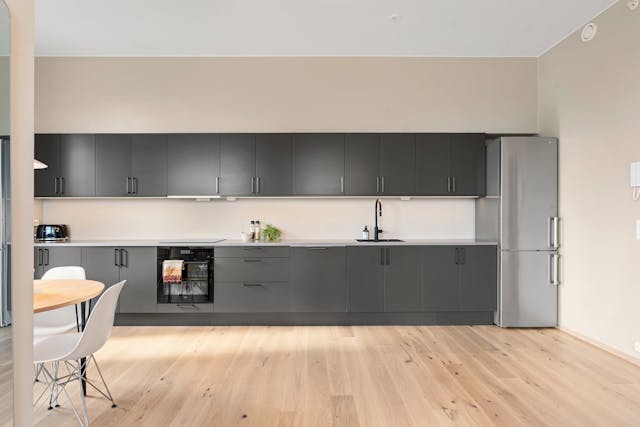In the hustle and bustle of modern life, many of us crave a simpler, more peaceful environment. Minimalist living offers you a way to create a functional and stylish space without breaking the bank. By focusing on the essentials and eliminating clutter, you can transform your home into a sanctuary that’s both inviting and practical.
Imagine stepping into a room that reflects your style yet feels open and uncluttered. Embracing minimalism doesn’t mean foregoing elegance or comfort; it’s about being intentional with your choices, from furniture to decor. This approach allows you to enjoy more with less, prioritizing quality and aesthetics over quantity.
You might wonder how to start this journey without spending too much. The secret lies in creatively rethinking everyday spaces and repurposing what you already have. Whether it’s rearranging furniture or adding a splash of paint, small changes can bring about significant transformations.
Embracing Minimalism
Creating a minimalist lifestyle can lead to a more fulfilling and organized life. By focusing on the philosophy of having less, decluttering effectively, and prioritizing quality, you can transform both your space and mindset.

The Philosophy of Less
At its core, minimalism promotes the idea that less is more. By reducing unnecessary possessions, you make room for more meaningful experiences and relationships. This shift from accumulating goods to valuing what truly matters can be liberating.
Focusing on essentials can help you understand what items truly add value to your life. It’s not about deprivation, but rather intentionality. Be mindful of your purchases by asking if each item serves a purpose. Minimalism encourages mindful consumption and thoughtful decision-making.
Decluttering Your Space
Decluttering is a crucial step in adopting minimalism. Begin by evaluating each room and identifying items you no longer need. Break this process into manageable tasks, working room by room or even section by section. Consider using the “keep,” “donate,” “discard” method to sort items effectively.
Aim for functional and tidy spaces by organizing belongings and eliminating clutter. Make use of storage solutions like bins, baskets, or shelves. This not only enhances the aesthetic appeal of your home but also creates a peaceful atmosphere. By clearing your space, you clear your mind.
Prioritizing Quality Over Quantity
In a minimalist lifestyle, investing in high-quality items over a large number of possessions is key. Choose items that are durable and versatile, which leads to long-term savings and satisfaction. Quality often equates to lasting performance, reducing the need for frequent replacements.
When making purchases, focus on timeless designs that fit your personal style. Consider materials, craftsmanship, and ethical production practices. By choosing well-made products, you’re supporting sustainable efforts and contributing to a more eco-friendly environment.
Ultimately, this approach helps cultivate appreciation for the items you own, strengthening your connection to your space.
Designing on a Shoestring
Creating a chic and functional space on a budget is entirely possible. You can furnish your home with second-hand treasures, embrace budget-friendly DIY projects, and plan smartly to get the best out of your limited resources.
Second-Hand Finds & DIY
Thrift stores and garage sales are treasure troves for unique and affordable home decor. You may find everything from vintage furniture to eclectic knick-knacks that add character to your space.
Consider DIY projects to personalize these finds. A fresh coat of paint can rejuvenate an old chair, while new upholstery can bring a dated sofa back to life. Pinterest is a great source for creative ideas.
Remember to see the potential in imperfect items; some minor repairs or creative paint jobs can transform them into stylish pieces.
Creative Low-Cost Solutions
Repurposing everyday items is a budget-friendly way to spruce up your home. Old wooden crates can transform into quirky bookshelves or coffee tables. Glass jars work as storage solutions or even unique flower vases. Hanging fabric or tapestry on a wall can double as art.
Instead of breaking the bank on expensive art, consider making your own or buying from local artists. Declutter and rearrange your existing furniture for a refreshing change.
Budget Planning for Home Decor
Establish a clear budget before embarking on your home design journey. Determine which areas require the most attention and allocate resources accordingly.
If electrical work is part of your home update, working with a trusted electrician in Brandon, MS, can help you plan and execute upgrades efficiently while staying within budget. Simple updates like installing energy-efficient lighting can enhance your space without significant costs.
Create a simple table outlining your essential purchases alongside estimated costs to avoid overspending. Always set aside a small cushion for unexpected expenses.
Functional & Stylish Spaces
Creating a space that is both functional and stylish can be achievable without breaking the bank. By focusing on maximizing small areas, choosing versatile furniture, and balancing aesthetics with utility, you can transform your home into a welcoming oasis.
Maximizing Small Living Areas
In small living spaces, every square inch counts. Start by selecting furniture that suits your space well—opt for items that are multi-functional, such as sofas with built-in storage or foldable desks. This approach ensures that you save space while keeping it functional.
Lighting plays a key role. Use natural light as much as possible by keeping windows clear of heavy curtains. Add mirrors to reflect light, making the room feel bigger. Wall-mounted lighting fixtures are a great choice to free up surface space.
To maintain a cohesive look, choose a color palette that complements your space. Neutral tones can create a crisp, clean background while allowing your statement pieces, like artwork or colorful cushions, to stand out.
Versatile Furniture Choices
Versatile furniture is a game-changer for a stylish home. Look for pieces that serve multiple purposes or can be easily rearranged. Modular furniture like sectionals offer flexibility, adjusting to your current needs or even changing room configurations.
Consider convertible furniture such as futons or murphy beds, which can transform a living area into a sleeping space at night. An ergonomic sofa bed is another great option, providing proper support for both sitting and sleeping while maximizing comfort in small spaces.
Folding tables and stackable chairs are also practical options, especially if you frequently host guests.
When selecting pieces, prioritize those with a timeless design. This ensures your furniture remains in style and useful for years. Quality over quantity is key; investing in durable pieces can save money long-term by avoiding frequent replacements.
Aesthetic and Utility Balance
Achieving a balance between aesthetic appeal and practical use is essential. Begin by assessing the essentials and deciding what elements provide the most comfort and utility without sacrificing style. Decluttering helps to clear unnecessary items, allowing for a more organized, visually pleasing environment.
Drawing inspiration from Cambridge design, you can create a space that blends classic elegance with modern functionality. This design philosophy focuses on simplicity, clean lines, and purposeful decor, making it a perfect fit for minimalist living.
Conclusion
Minimalist living proves that style and functionality don’t have to come with a high price tag. By focusing on essentials, decluttering, and choosing quality over quantity, you can create a space that is both practical and visually appealing.
Budget-friendly strategies like repurposing items, DIY projects, and second-hand finds allow you to personalize your home without overspending. Thoughtful furniture choices and smart space optimization ensure every area serves a purpose while maintaining a stylish aesthetic.
Ultimately, minimalism is about intentionality—curating a home that reflects your needs and personality while fostering a sense of calm and simplicity. With creativity and mindful decision-making, you can transform your space into a functional and inviting sanctuary on any budget.



